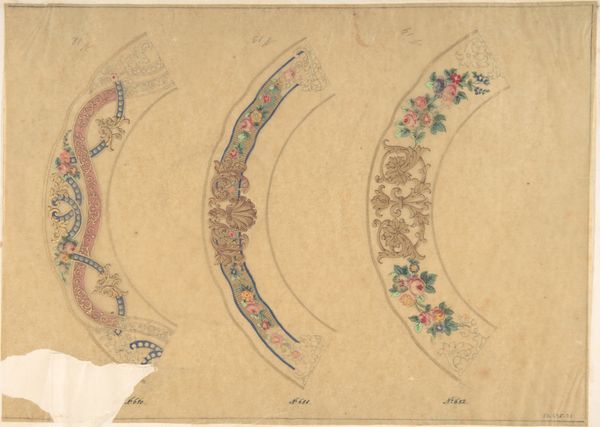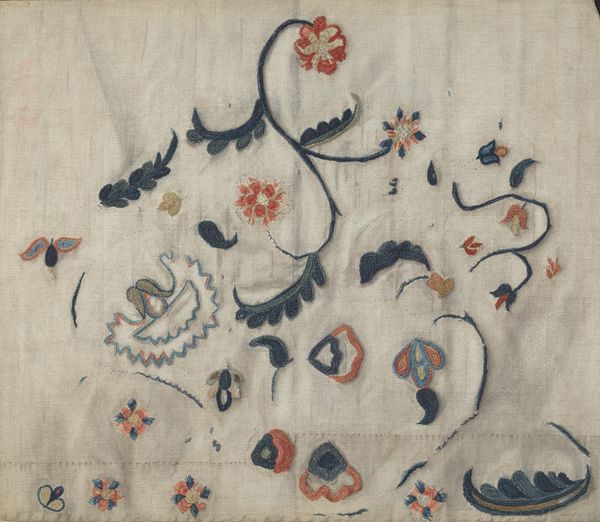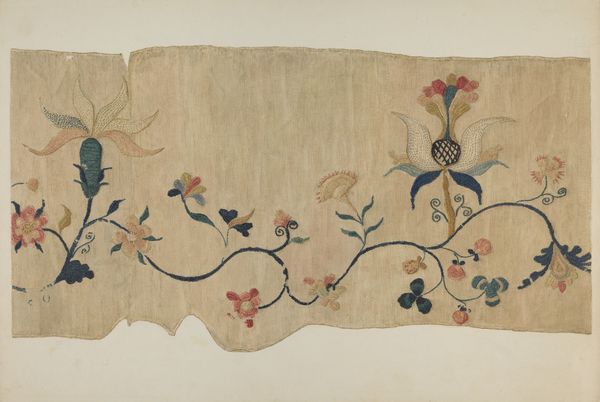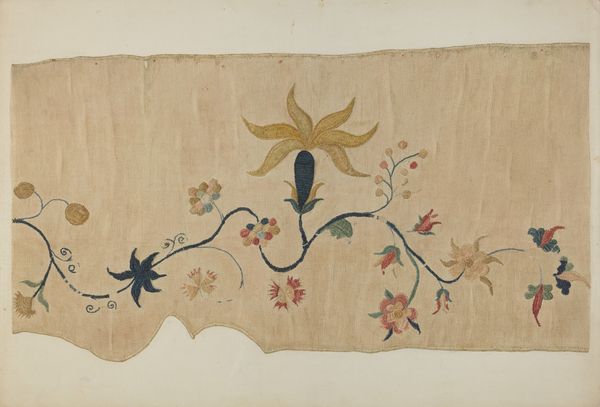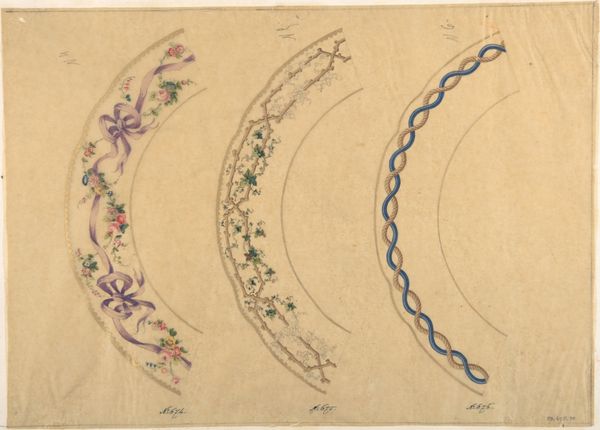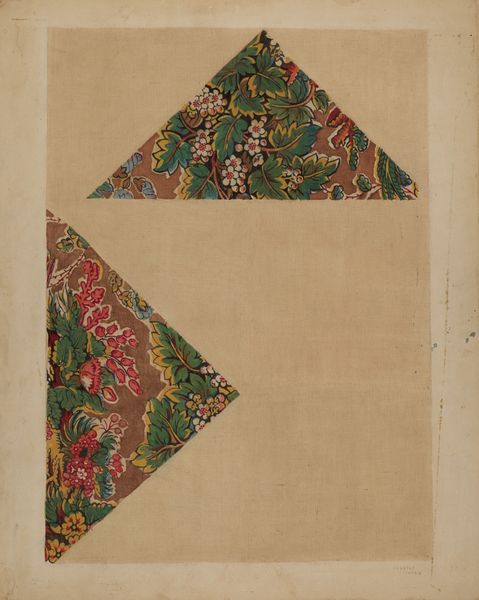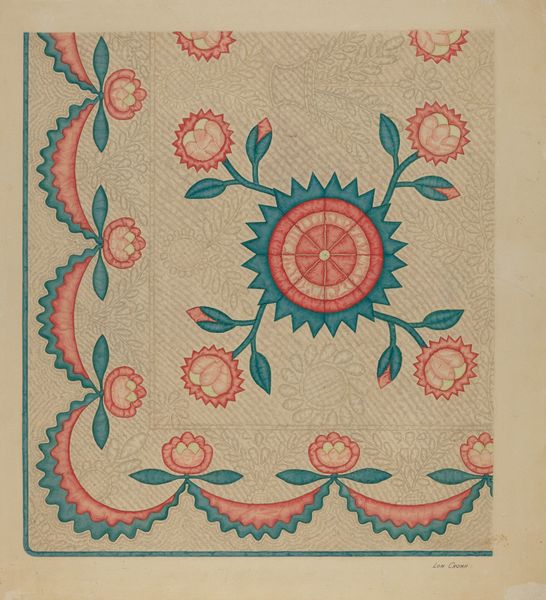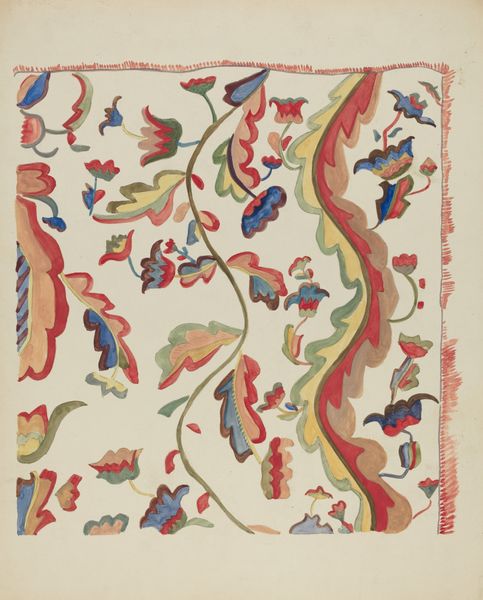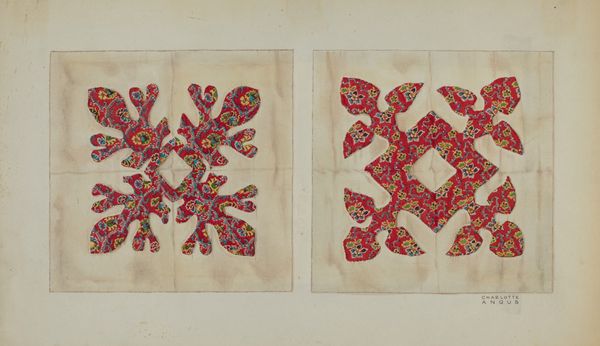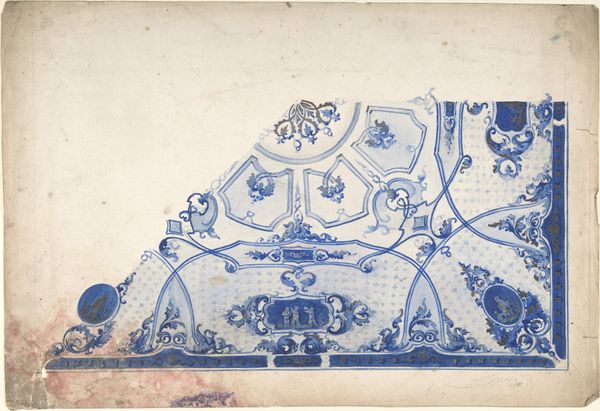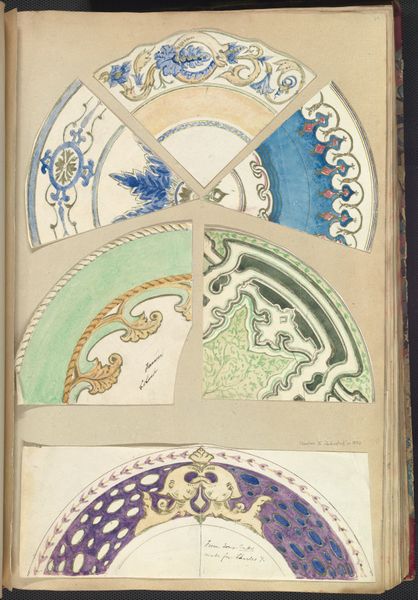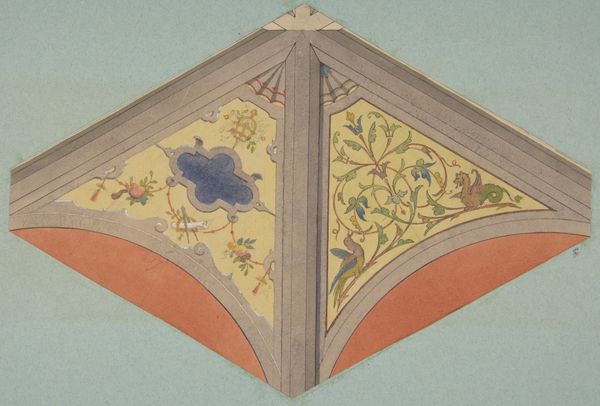
drawing, print, watercolor
#
drawing
#
water colours
# print
#
watercolor
#
romanticism
#
decorative-art
Dimensions: sheet: 13 11/16 in. (34.7 cm)
Copyright: Public Domain
Curator: At the Metropolitan Museum of Art, we have a work titled "Three Designs for Plate Borders," an intriguing example dating back to the 19th century. The identity of the artist is not known. It uses watercolor and print on paper. What strikes you first about this trio of designs? Editor: The initial impact is quite decorative; each border feels meticulously planned with recurring floral patterns encased in what appear to be geometric, curvilinear forms, creating a unified aesthetic across the different samples. Curator: Exactly. Looking at them through a materialist lens, I find myself contemplating the context in which these designs were created. Plates were important household items, signifying a family’s status and taste, but the labour of the artisan responsible for creating such beautiful yet ultimately utilitarian items are seldom examined or credited. Editor: I’d say focusing on its formal attributes, there is a clear attempt to explore shape and structure. The use of repeated floral motifs set within frames generates an intriguing pattern that’s highly rhythmic and carefully calibrated. It looks romanticist in its theme of using flower imagery. Curator: I agree. And that's the crux, isn't it? Was it more vital that these objects be beautiful, or were they an opportunity to showcase wealth and social positioning? Where did this artisan’s interests lie when they embarked on these designs? Was there room for artistic autonomy in pieces created for consumption, or were these plates meant as blank canvases meant solely to symbolize riches? Editor: Those questions push the understanding, but focusing on intrinsic forms allows us to appreciate the object's inherent appeal. It is how color and patterns interact and establish balance to create its own logic and meaning. Curator: A meaning that stems, I imagine, from the complex history of material culture, labour, and industrial output which are never truly detached from something that, viewed passively, would serve purely as art. Editor: Well, whatever assumptions and thoughts we each carried with us are not quite the same after closely examining "Three Designs for Plate Borders". Curator: Precisely, a dialogue about context and form has enriched both our perceptions of art, haven't they?
Comments
No comments
Be the first to comment and join the conversation on the ultimate creative platform.
